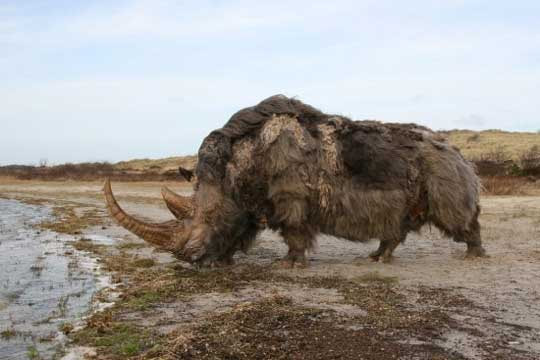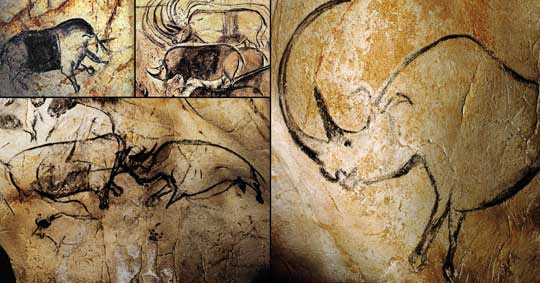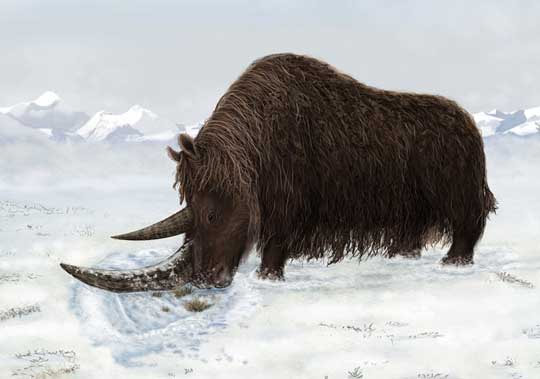|
Sometimes I feel compelled to bring justice to certain animals that have an unfairly nasty reputation. Snakes, for example, do not deserve to be almost universally hated. Mice are another example... what could be more harmless than a mouse? Chiggers on the other hand... well, don't get me started on those evil demons from hell. What do you think of when you hear the name Vampire Bat? I'm guessing that the thoughts going through your head are not exactly pleasant. So, my duty today is to inspire a bit more respect and admiration for this creature. What the heck is a Vampire Bat? First of all, not all bats are vampire bats. In fact, of the 1,300 or so species of bats in the world, only THREE of those species are vampire bats. All bats are in the order Chiroptera, and the three species of vampire bats happen to be in the family, Phyllostomidae, also called the leaf-nosed bats. The three species include the common vampire bat, the hairy-legged vampire bat, and the white-winged vampire bat. Vampire bats can be found from Mexico south into South America. What makes vampire bats so unique among bats is their feeding habits. They have evolved to consume blood, a habit called hematophagy. That's all they eat—blood. No insects, no fruit, no nectar, not even asiago cheese bagels. They don't even drink water. Just blood. This habit, of course, is the source of all the unwarranted human derision of these animals. Amazing facts about Vampire Bats These bats were named after vampires, not the other way around. Since vampire bats live only in the New World, they were not described in scientific literature until 1810. As you probably know, myths about blood-sucking humans called vampires existed long before that. And then, in 1897, Bram Stoker's Dracula was released, and thus was born the silly idea that vampires could shape-shift into the form of a bat. As you can imagine, the vampire bat's reputation went downhill from there. By the way, Stoker also allowed Count Dracula to shape-shift into mist and into a wolf. Even the medical community has embraced the pop culture association of bats and vampires! A Venezuelan research team isolated a new anticoagulant from one of the vampire bat species. They named the substance "Draculin." Vampire bats are small, averaging only 3.5 inches (8.9 cm) in body length and two ounces (56 g) in weight, although that weight can double during a good feeding. I mention this because people often assume they are much larger. In fact, Bram Stoker himself wrote the following quote in Dracula: "I have not seen anything pulled down so quick since I was on the Pampas and had a mare ... One of those big bats that they call 'vampires' had got at her during the night and ... there wasn't enough blood in her to let her stand up." Hmm... perhaps Stoker didn't realize vampire bats only weigh two ounces. Vampire bats very rarely attack humans. That's not to say that they are picky eaters—they will feed on the blood of just about any animal. Mostly they feed on birds and farm animals, but they have been known to feed on porcupines, armadillos, snakes, sea lions, and even penguins. Notice the tiny size of these white-winged vampire bats feeding on a sleeping chicken: Let's take a closer look at vampire bats' feeding habits. First of all, these bats do not suck blood. Instead, they make a small skin puncture with their needle-sharp teeth, and then they use their tongue to lap up blood that comes from the puncture. They can consume about one ounce (30 ml) in one night, and it usually takes them about thirty minutes to lap up this much blood. As you can probably guess, they only feed at night. Now this is interesting... If vampire bats go more than 48 hours without a meal, they die. When a vampire bat has a hard time finding enough food during the night, it will fly back to the roost (sometimes a roost may have hundreds of bats). There, the other bats that were more successful will regurgitate their extra blood so that the hungry bats can get enough to eat. Wow! See how friendly vampire bats can be? These creatures have their own social safety net. This odd social behavior gets even more amazing. Research has shown that vampire bats will only regurgitate blood for other bats that are either close family or friends. The close family part of that statement is not surprising. It's the friends part that I find most fascinating. As it turns out, while vampire bats are hanging out (literally) in the roost during the day, they make friends. How do they make friends? For a bat to make a friend, it must take the time to groom and socialize with another bat (socializing basically involves snuggling up together). And it takes one to two months of grooming and snuggling before a bat is considered a friend. Check out this video of vampire bats making friends So, bats that do not invest the time and effort to make friends are at risk of starving whenever they have a bad night hunting for blood. See what I mean? Vampires bats have to be friendly! (I wonder if there is a lesson we can learn from this...?) Let's look at how they actually hunt and feed. These bats have infrared perception in their snouts. These heat-seeking sensors help them find warm-blooded animals and then help them find veins that are near the skin's surface (kind of like my sensors that zero in on a good taco bar). Also, like other bats, vampire bats use echolocation (seeing with sound), allowing them to find their way around in the dark. Bats are the only mammals that can fly (gliding doesn't count). While most bats cannot walk, vampire bats are the only mammals that have ancestors that evolved flight, then lost the ability to walk, and then re-evolved the ability to walk. Yep, these little guys can scoot along at three feet (1 m) per second. That's pretty useful for an animal that needs to land and then sneak up on a larger animal to steal some blood. Check out the bat's walking mechanics below. Okay, so the bat lands near its source of food, such as a sleeping cow, then it walks over to the cow and locates a vein near the surface. The bat uses its unbelievably sharp incisor teeth (these teeth do not have enamel, so they remain permanently razor sharp) to puncture the skin. So that the cow's blood does not clot up and stop flowing, the bat's saliva contains anticoagulants (yep, one of those anticoagulants is the one called Draculin). Usually, the sleeping animal doesn't even know its blood has been stolen. Finally (and this part is really cool), vampire bats have their favorite restaurants. Let's face it, a 2-ounce bat feeding on a massive pig or cow is risking its life for a meal. The larger animal could step on the bat, roll over on it, or even slap it with a wing, hoof, or tail, smashing it instantly. So, when a bat finds an animal that is particularly easy to feed on (a nice fat vein near the surface, an animal that sleeps soundly, etc.), then the bat will return to that same animal night after night. How do they find the same animal? Vampire bats can locate their prey by sensing the sound of an animal breathing. In fact, this is so sensitive that they can even recognize the breathing pattern of one specific animal, allowing them to return to that particular buffet night after night. The vampire bat below is feeding on a donkey's hoof. Again, vampire bats rarely feed on humans (humans happen to have hands for swatting, which we can do even when we are asleep, so we are kind of dangerous to these bats). They aren't picky, however, so if you sleep in the open air (without a tent) where vampire bats live, your arms and legs are fair game. So, the Vampire Bat deserves a place in the L.A.H.O.F. (Lulu Animal Hall of Fame). FUN FACT: The word lulu originated in 1886. It refers to any remarkable or outstanding person or thing ("I read my first Bridgers book the other day, and it was a lulu."). This word is thought to have originated as a reference to Lulu Hurst. Who is Lulu Hurst? She was also called the "Georgia Wonder." She was a popular attraction from 1883 to 1885. Supposedly, she possessed a mysterious force that "allowed her to effortlessly move, with just a light touch, umbrellas and canes held tight by others." She was only 15 when she became famous for this act. So, lulu is another way to say awesome! Photo Credits:
Icy leaves - Stan C. Smith Snow flake - Wikipedia Electron microscope image - Wikipedia Terminator - James Bareham/Polygon Vampire bat #1 - Uwe Schmidt - Wikimedia Commons White-winged vampire bats feeding on chicken - Bat Conservation International/J. Scott Altenbach Vampire bats roosting - Josh More/Flickr Walking vampire bat - Daniel K. Riskin, John W. Hermanson Vampire bat feeding on donkey's hoof - Adrian Warren via The New York Times
0 Comments
My new Across Horizons series features many fascinating creatures (some of them scary, some not so much). One animal that makes several important appearances in the first book (titled Obsolete Theorem) is the Woolly Rhinoceros. The woolly rhino, now extinct, is one of those iconic Ice Age creatures, along with such animals as the woolly mammoth, the cave bear, and the saber-toothed cats. What the heck is a Woolly Rhinoceros? First, the woolly rhino (Coelodonta antiquitatis) was... well, woolly. It had a long, thick coat of fur to help it stay warm in a freezing climate. Woolly rhinos stood about 6.5 feet (1.98 m) high at the shoulder. This is taller than most humans and about the size of the modern white rhinoceros. They weighed up to 6,000 pounds (2,721 kg) and were about 12.5 feet (3.8 m) long. Woolly rhinos lived throughout Europe and northern Asia, and they existed from about 350,000 years ago to the end of the last ice age, about 10,000 years ago. Amazing facts about the Woolly Rhinoceros The woolly rhino had the widest range of any rhinoceros species. It lived in most of the areas where woolly mammoths lived... except for North America. For some reason, woolly rhinos did not cross the Bering land bridge, although no one seems to know exactly why. I suppose it's possible that a few woolly rhinos made it to North America, but since no remains have been found, there must not have been very many that made it. Some scientists suggest that woolly rhinos didn't cross the land bridge because they could not survive in a tundra environment. Woolly rhinos had two horns, and the horn on the end of their snout was really long, up to 4.6 feet (1.4 m). This long horn faced forward more than the horns of modern rhinos. Why? It is thought that woolly rhinos used their long horns like a snow shovel, scooping deep snow to the sides so they could eat the plants beneath it. By the way, rhinoceros horns are made of keratin, the same substance that makes up hair, fingernails, claws, feathers, hooves, calluses, and the outer layer of skin of many animals. Because these horns are made of keratin, and they do not have a bony core like the horns of some animals, rhino horns do not fossilize. So, if the horns didn't fossilize, how do we know what the horns looked like? Because some woolly rhinos have been found that were preserved in permafrost (soil that is permanently frozen throughout the year). And since woolly rhinos existed relatively recently (10,000 years ago is VERY recent by evolutionary standards), some of these frozen horns are still intact (not fossilized... just frozen). Below is an amazingly well preserved woolly rhino found by gold miners in Siberia in 2007. It died and became permanently frozen about 39,000 years ago, which happens to be fairly close to when Skyra lived. Notice that much of the fur is missing, except on parts of the legs and head. Perhaps an even more remarkable find is Sasha. Sasha is a juvenile woolly rhino found in 2014 (also in Siberia), and in this case nearly all of the fur was intact. Scientists carefully cleaned the 34,000-year-old skin and fur and arranged it in standing pose to show what the creature looked like in life. Kind of cute, huh? Ancient humans were apparently impressed by woolly rhinos. Images of these creatures are found among numerous cave paintings. Perhaps the most impressive set of cave painting ever found is the Chauvet Cave in southern France. This cave wasn't discovered until 1994, and it is packed with spectacular paintings that have been dated at 30,000 to 33,000 years old. Among the most common animals depicted—the woolly rhino. Hmm... these cave paintings stimulate the imagination, don't they? Why did these people 30,000 years ago paint animals on cave walls? This is an interesting question, but the problem is, these people are long gone and we know nothing about their culture and the way they thought about things. So, all we can really do is guess. When someone painted a woolly rhino, were they simply painting the animal they liked to hunt and eat? Or perhaps they were painting a supernatural spirit? Or maybe they were depicting a family member whose soul they believed now exists in the form of an animal. Perhaps the cave could have even been a classroom, in which the children were encouraged to draw whatever came to their minds at the time. I guess we'll never know, will we? Another thing we may never know for sure is how frequently humans (and Neanderthals) hunted woolly rhinos. Rhino bones have been found alongside human bones in caves, but these particular caves were not natural habitats for either the humans or the rhinos. This suggests that other animals, such as hyenas, may have dragged the bones into these caves. Some weapons and tools were made with rhino bones, but these could have been bones from carcasses the humans found. Perhaps the best evidence we have is rhino bones that have marks likely caused by human tools or weapons (some caused by a sharp object, maybe a spear). Anyway, I'm pretty sure that when humans or Neanderthals encountered a woolly rhino, it was a rather exciting event. Check out this video of a Neanderthal/woolly rhino encounter. So, the Woolly Rhinoceros deserves a place in the H.A.H.O.F. (Humdinger Animal Hall of Fame). FUN FACT: The first documented use of the word humdinger was in 1883. It is considered an Americanism, and it refers to something or someone truly remarkable (The mayor gave a humdinger of a speech). The word may have originated by combining hummer and dinger, both of which were used to refer to something exceptional. Humdinger is also often used to describe something that is large (It was a humdinger of a storm), which makes this word particularly suited for the woolly rhino. So, humdinger is another way to say awesome! Photo Credits:
Woolly rhino #1 - ExtinctAnimals.org Woolly rhino size comparison chart - Prehistoric Fauna Well-preserved woolly rhino - Vladimir Filippov via Twitter Sasha the baby woolly rhino - Siberian Times Chauvet Cave paintings - The Bradshaw Foundation Last Woolly rhino image - CBS News |
Stan's Cogitations
Everyone needs a creative outlet. That's why I write. Archives
July 2024
|












 RSS Feed
RSS Feed